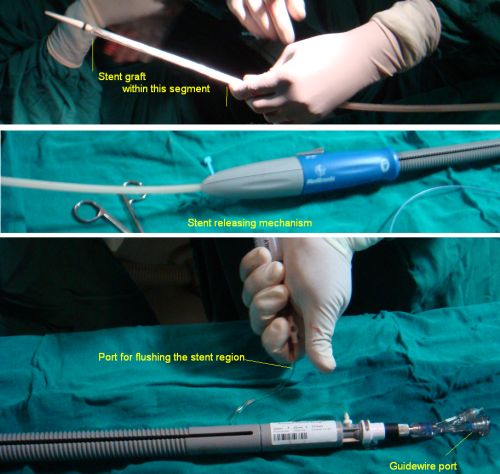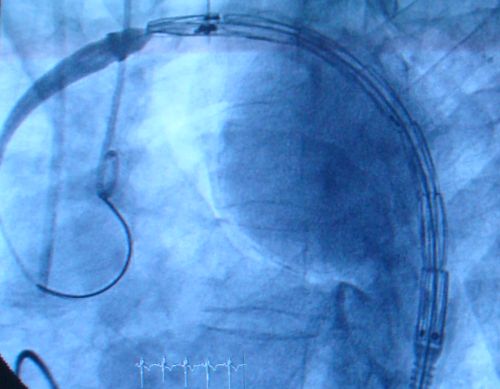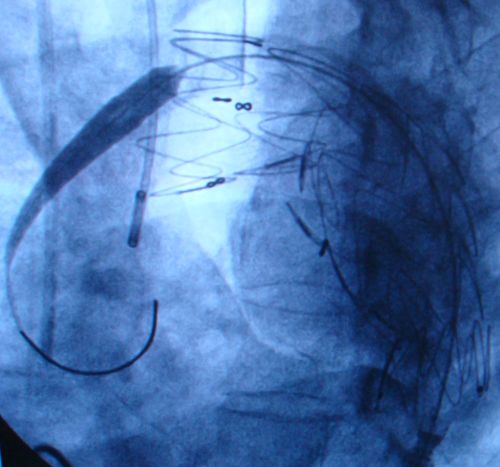Aortic stent grafting – pictorial review
Aortic stent grafting
Aortic stent grafting is becoming increasingly common for treatment of thoracic and abdominal aortic disease. Aortic aneurysms can be excluded by stent grafts, avoiding a major cardiothoracic surgery, with obvious advantages in those with multiple comorbidities, often having prohibitive surgical risk.

Aortic stent graft delivery system is quite long and thick requiring a femoral artery cut down for introduction. If the diameter of the femoral arteries are small, it may need an external iliac artery exposure. The proximal end of the device has a mechanism for releasing the stent after accurate positioning. There is also a side port for flushing the stent region. Stent graft is mounted at the distal end of the device. Guide wire port can also be seen at the proximal end.


This fluoroscopic image shows the aortic stent graft positioned in the arch and descending thoracic aorta, ready for deployment. The saccular aortic aneurysm is also visible in the background. While positioning the device, shortening during expansion should also be taken into consideration. Comparison charts of the shortening during expansion for each stent diameter is available along with stent graft as a product insert. If this important aspect is not taken into consideration, the stent graft may not cover the lesion completely, leading to endoleak.

In this image we see the stent graft soon after delivery, but before the removal of the guide wire and the delivery system, part of which can be seen beyond the stent graft, in the ascending thoracic aorta.